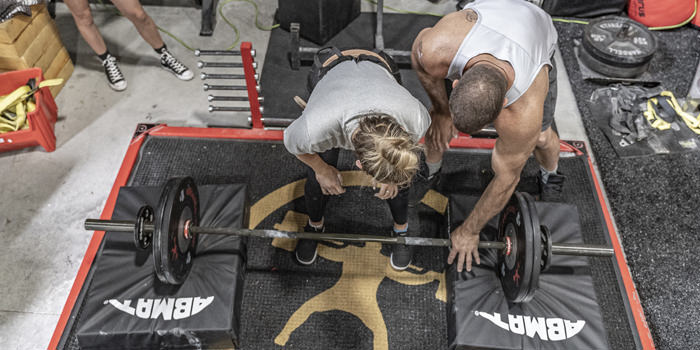
I have written quite a bit about deadlifting, so it’s no surprise that it’s my favorite lift in powerlifting. I’ve been a strength coach now for over 15 years and a competitive powerlifter and strongman for nearly 12.
Over these 12 years, I have been lucky enough to work with some very knowledgeable coaches and athletes who have given me some great tips along the way. Both of these sports have given so much to me and my business. I can easily say I am a much better coach from competing and learning from others in the sport. I’m sure some of you reading this are also coaches and use different cues to teach the deadlift.
Here are five of my biggest tips that helped me the most.
RECENT: How to Squat for Strong(wo)man
1. Pull In Both Stances
I know, this is something that has been covered a few times before, but it needs to be repeated. When I first learned sumo years ago, I was immediately better than I was conventional. Moving forward, I would only pull sumo, which improved over time, getting me to a 700-pound deadlift. However, my deadlift wouldn’t budge for quite some time after.
It wasn’t until I switched back to conventional, as I was competing more in strongman, and it was a huge weak point for me. I took a break from sumo and only pulled conventional until I was pulling over 700 for a few reps.
I decided to go back to powerlifting and tested out where my sumo was. First time I went back to it, the weights were flying off the floor, and I went on to pull 800 pounds at the meet. Getting stronger in my weaker stance added 100 pounds to my deadlift.
This is especially important for strongman competitors. So many events require you to be in a sumo stance to pick up an implement: sandbags, kegs, stones, power stairs, and now, we're seeing a new event at the Arnold for the women called the blob deadlift, which is essentially a very low sumo deadlift.
2. Take the Slack Out of the Bar!
This is something I probably say daily while coaching at my gym. Not being tight and trying to rip the bar off the floor is a recipe for injury. What I see happen every time is the lifter getting in position without getting tight. When they start the pull, they get pitched over the bar, round their back, and make the lockout much harder than it has to be.
If you’re a powerlifter where you can’t hitch, this is something you need to work on. If you are a strongman competitor, this is still something you need to work on. Even though hitching is allowed, you are still wasting energy and risking injury.
What I like to do is use the weight of the bar to pull me in position. I’m currently training for the Arnold where we have an axle deadlift.
As you can see in the video, I take my breath with my hips high, and as I drop them, I am taking the slack out of the bar, creating a lot of tension before I start the lift.
3. Train Your Weak Point
Everyone falls into one of two categories on the deadlift: either weak off the floor or weak at lockout. I see too many lifters go to what they are stronger at.
I was always very strong at lockout, so I made the mistake of feeding my ego and pulling off blocks. I could pull way over my max, and it made for cool videos on Instagram, but my deadlift didn’t budge. It wasn’t until I decided to do what I suck at, which was deficit deadlifts, that my pull started to move again.
I like to follow Swede’s 5thSet: Do your main lift for the prescribed reps/sets, then do your mechanically similar movement to work on your weak points. Do block pulls and pause deadlifts if you are weak at your lockout. Do deficit deadlifts and snatch grip deadlifts if you are weak off the floor.
4. Push Your Feet Through the Floor
Before my conventional deadlift began to really move, I had a bad issue of falling forward. No matter where my head was or what accessory lift I did, I would set my hips and get tipped over.
I learned this cue from Josh Bryant years ago, to think of the deadlift as a standing leg press. As I got tight, I only focused on pushing my feet through the floor. It took some practice with lighter weights, but my chest stayed up and I was able to use my legs more efficiently.
5. Get Your Lats Tight
This was a game-changer for me when I was actually able to feel my lats on the deadlift. I think of a bodybuilder flaring their lats, and I do the same as I set up for my pull.
If you are a strongman competitor who uses straps, a great way to do this is to externally rotate your hands on the bar. Basically, turn out hard on the bar, like you are trying to bend it in half. Also, make your arms as long as possible. Long arms make the pull shorter, allowing you to pull more weight. If you have an issue with your lower back rounding like a scared cat, then this can help fix that issue.
Check out this video with Dave Tate and John Rusin, and notice the cue of reaching down on the set-up.









8 Comments